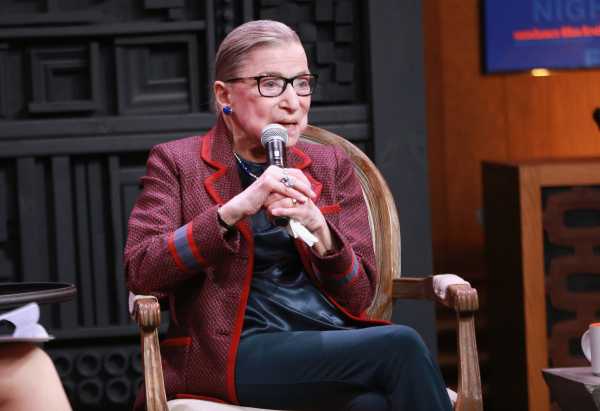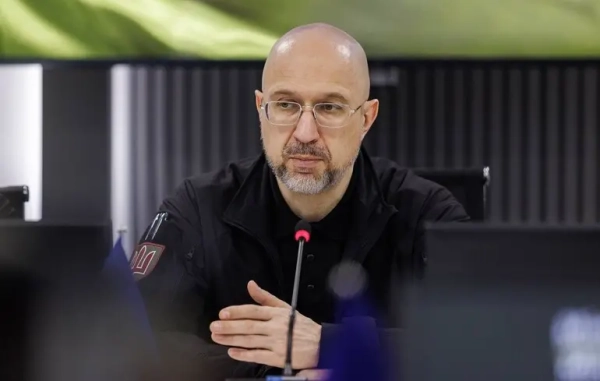
On November 7, Supreme Court Justice Ruth Bader Ginsburg fell, fracturing two ribs. X-rays to treat the broken ribs revealed two nodules on her lungs. On Friday, Ginsburg, who is 85, underwent surgery to remove the nodules, both of which proved cancerous upon post-operative testing. The surgery was successful, and doctors say there’s no evidence of further cancer on Ginsburg’s scans. “She hopes to be back on the court for the start of the next argument session in early January,” reported NPR.
Ginsburg, who previously survived colorectal and pancreatic cancer, is tough as they come. Liberals thrilled to reports that she was working from her hospital bed, merely two days after her surgery. Twitter filled with memes offering Ginsburg a rib, a lung, a liver — whatever she might need to keep working.
But the celebration of her resilience reflects a barely suppressed panic: If her health fails in the next two years, President Donald Trump and Senate Majority Leader Mitch McConnell will fill her seat, leaving the Court with a 6-3 conservative majority.
“What was she doing walking around an office?” asked Stephen Colbert after learning the details of her fall. “She’s far too precious. Forget a black robe, she should be dressed in bubble wrap and carried down the hallway like a Fabergé egg!”
No one knows the stakes better than Ginsburg herself. “I can’t imagine what this place would be — I can’t imagine what the country would be — with Donald Trump as our president,” she said in 2016. “For the country, it could be four years. For the court, it could be — I don’t even want to contemplate that.”
And so, atop the difficulty of recovering from two broken ribs and a cancer surgery just five years shy of her 90th birthday, she’s bearing the weight of American liberalism on her shoulders. I don’t know if Ginsburg would, at this point, prefer to retire. But even if she would, she knows she can’t. That’s a pressure no one should have to bear.
The case for 18-year Supreme Court terms
The core problem here is the stakes of Supreme Court nominations: They’re too damn high. Candidates serve for life — which, given modern longevity and youthful nominees, can now mean 40 years of decisions — and no one knows when the next seat will open. President Jimmy Carter served four years and saw no open seats. President George H.W. Bush served four years and filled two. Barack Obama served two terms and confirmed two justices. Donald Trump isn’t even two years into his presidency and, thanks to McConnell’s assist with Merrick Garland, he’s already filled the same number of vacancies as Obama did in eight.
The result isn’t merely an undemocratic branch of government but a randomly undemocratic branch of government. And that randomness, and the stakes of seeing it play out in your side’s favor, turn Supreme Court nominations into bloodsport.
In practice, the Supreme Court decides how elections are funded, whether abortions are legal, whether millions of people will continue to have health insurance — if legislators and activist groups see its composition as a matter of life and death, that’s because it often is. This is why, in 2016, McConnell refused to consider any of President Obama’s nominees to fill the vacancy left by Justice Antonin Scalia: Keeping a conservative majority on the Court was, for Republicans, worth any amount of damage to the institution, and to American politics more broadly.
These same incentives create extraordinary pressure for justices to stay on the bench long after they might have otherwise retired, in the hopes that they can outlast an ideologically unfriendly administration. They also bias presidents toward nominating the youngest qualified jurist they can find, rather than the best candidate they can find.
The Supreme Court should reflect the Constitution and the country, not the quirks of longevity. Holding justices to a single, nonrenewable term would lower the stakes of any individual Supreme Court nomination as well as make the timing of fights more predictable.
An idea like this could have bipartisan support — Gov. Rick Perry proposed 18-year terms in the 2012 campaign, making an argument that I think sounds even more persuasive today:
Eighteen-year terms would also ensure the Court keeps closer touch to the country. Being a Supreme Court justice is a plum job, and it’s understandable that few want to give it up. But there are too many examples of justices serving after their faculties began to fail; Chief Justice William Rehnquist, for instance, missed 44 oral arguments in 2004 and 2005, after undergoing a tracheotomy to fight thyroid cancer. Nevertheless, he declined to step down and, shortly thereafter, died in office.
Even in less extreme cases, serving as a Supreme Court justice is the kind of job that pulls you far out of normal human context. You’re one of the most powerful people in the country, surrounded by ritual and deference, traveling in only the most rarefied circles. In an institution like that, more new blood, more often, is probably a good thing.
Implementing term limits for the Supreme Court would be a step toward repairing and normalizing a process that raises the stakes of vacancies beyond what our politics, or the human beings who serve on the Court, can comfortably bear.
Sourse: vox.com






